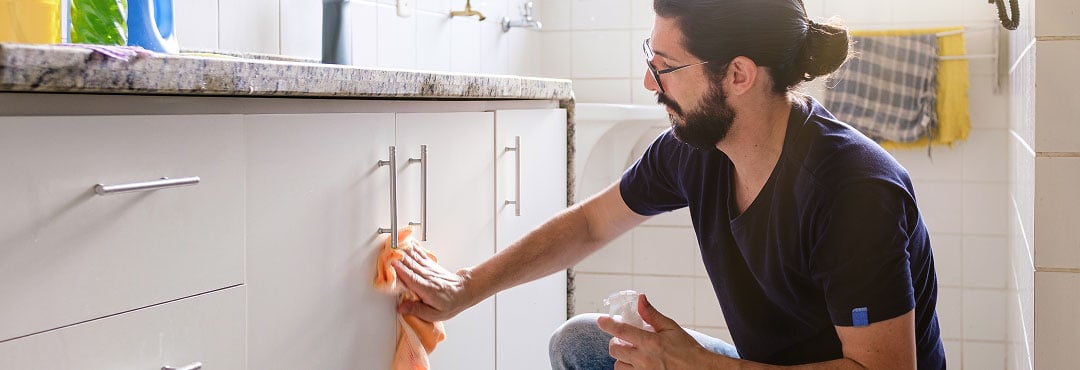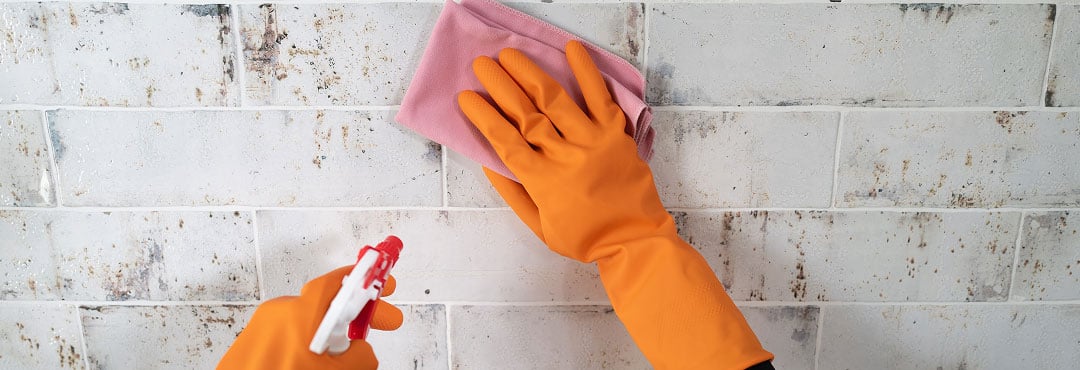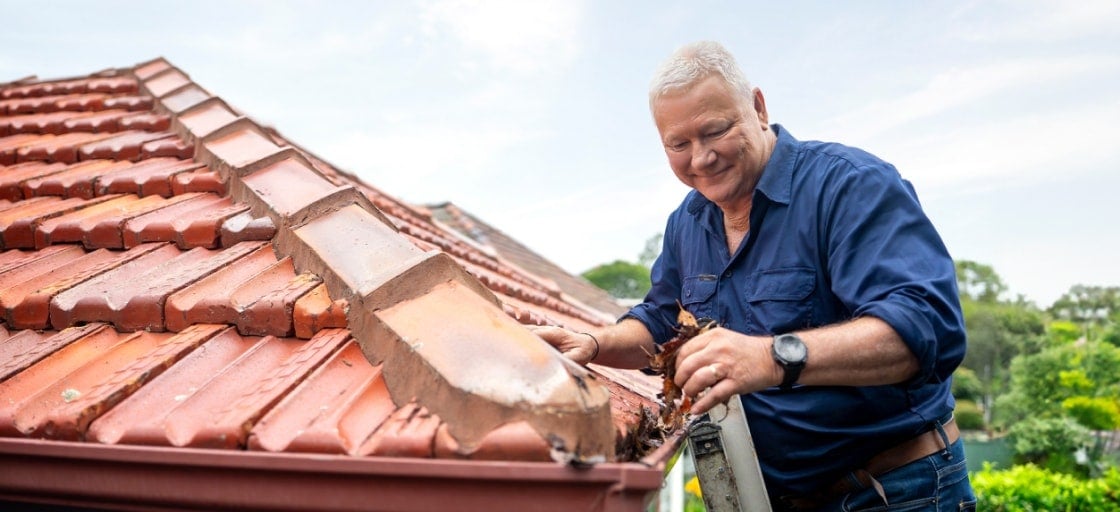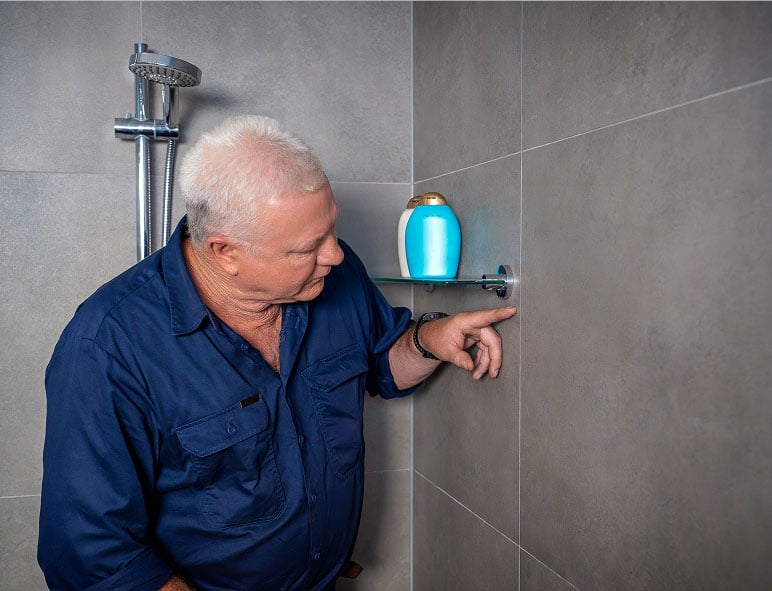If you don’t tackle the root cause of the mould outbreak, it’s likely to reappear. That usually means removing the damp conditions that mould needs to thrive. It may be as simple as opening a window or installing an extractor fan to ventilate and dry the problem space.
A portable dehumidifier may help by reducing the moisture content of the air, especially if you can’t easily ventilate the space. Some models also include filters to remove dust particles from the air to help allergy sufferers. You can also use chemical moisture absorbers, which are handy for small, enclosed spaces such as cupboards.
To fix any leaks or damp problems in the bathroom, see our guide to keeping your bathroom in good shape. If there’s mould on the ceiling from a leaky roof or blocked gutters, contact a professional to help fix the issue. Check out preventing roofing disasters in the Allianz Blue Eagle maintenance hub.
Installing wall vents should improve subfloor ventilation by increasing the flow of air beneath the house. This can help fix rising damp problems. However, if it’s caused by a structural defect, such as a broken damp course, you may need professional advice.



